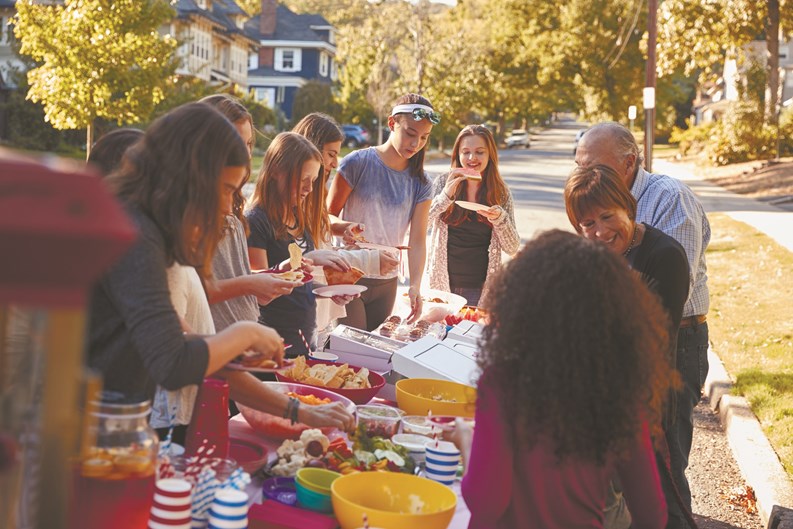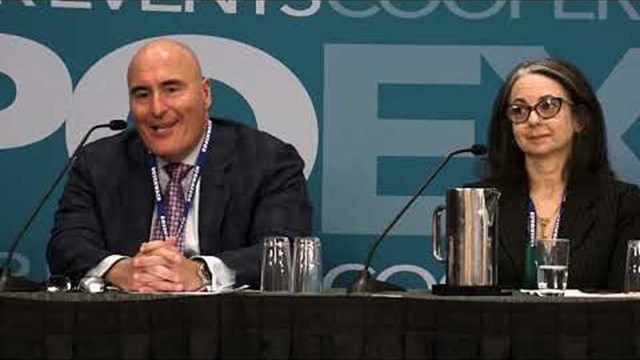Condo, co-op and HOA communities come in all sizes, shapes, and locations. They can range from literally thousands of units spread across multiple high-rise buildings, or scores of single-family townhomes in sprawling HOAs. They can be designed for residents of specific age, like 55+ active-adult communities; or for multi-generational living geared toward health, such as the growing ‘wellness-living’ communities that provide everything from yoga classes to movie theaters to school systems. They can be located anywhere. What they have in common – and what sets them apart from single-family home living, even in large single-family HOAs—is residents’ desire to be part of a defined community, and community administrators’ efforts to facilitate that.
Living in a Lively Place
Sue Bregman has been a resident of The Point in Aventura, Florida for more than 20 years. The Point, an open condominium community with no age restrictions, is composed of five residential towers set amid 36 acres of landscaped park area, and includes over 1,000 units. The community is centered on the 25,000-square-foot Residents Club & Spa—known simply as ‘the Spa’—which includes three pools, a waterfront social club and promenade, and a state-of-the-art exercise and training facility. The Residents Club also offers activities both within and outside the complex under the direction of a full-time social director and volunteer social committee. Bregman explains that the individual buildings in the complex have their own social committees as well.
She participates in activities sponsored or arranged by the social committees in the Spa and her building five days a week. While retired, she says that “work has nothing to do with attendance. If you’ve got a friend who’s going to an activity, you’ll go, too. We try to run the gamut here, to get young people to participate as well as older. The Spa organizes activities for families with children as well.”
Over-55 and Active
Marge Hoffman, a resident of Somerset Run, a 55-and-up community located in Somerset, New Jersey, reports a similar structure in her complex. Somerset Run is an HOA composed of primarily single-family homes with some condominium units, for a total of just over 1,000 residences. There is a clubhouse with a social director, but Hoffman notes that many activities are member-conceived and member-executed. “The social director sets up lots of activities,” she says, “but within the community there are people who set up their own programs and activities.” So while the social director at the clubhouse may organize trips to New York or Philadelphia to see a show or visit a museum, other types of activities, such as book clubs or mahjong and canasta games, are organized by the residents.
Where the two social forces intersect is in space planning. “If you want to use a room at the clubhouse for your group, that’s fine,” Hoffman explains, “but you have to arrange it with the social director at the clubhouse. Some other group may have a space that you want booked at the time you want it, so you might have to change your time if the space isn’t available.” As a rule, activities that involve travel out of the community—and those things that involve a great deal of logistics, like a community dinner with entertainers for say, New Year’s Eve, or a trip to a show in Manhattan—tend to be organized by the social director. Activities that are more local, like a book club or a card game, tend to be organized by the residents.
Audrey Davis-Stok, Lifestyle Director for Great Island, an over-55 community in Plymouth, Massachusetts, concurs. “As lifestyle director, there are very few community-wide events that I plan,” Davis-Stok says. “We have volunteer clubs within the community that are managed by residents. They do most if not all of the planning.”
Trouble in Paradise
For many, buying into a community – particularly an active over-55 community – is kind of retirement paradise. Everything is there for your enjoyment. However, like anything involving more than one person and their respective tastes and opinions, conflicts do occasionally arise between residents and their community’s social events infrastructure.
The Greens at Half Hollow in Melville, New York is comprised of over 1,000 units, and features a golf course and a clubhouse as the social center for its residents. Unlike many other communities, however, the residents do not own the clubhouse and have little to no say in how things get done there. The developer of the property kept control of the clubhouse after selling off the individual condominium units.
George Borsuk has been a resident at The Greens for 14 years. During that time he has been very active in the social life of the community. He is the president of the Men’s Club, which – as is not uncommon in large communities such as his – was formed independently of the clubhouse and the official community social director. “We don’t own the clubhouse,” says Borsuk. “We pay a monthly fee to the clubhouse owner, which is determined every month. There’s no formula. Whatever they want to charge, we have to pay. They do arrange some activities,”(Borsuk estimates that the clubhouse plans about 20 percent of the total menu of social events) “but we, the residents, arrange most of our activities ourselves, through the Men’s Club, the Women’s Club, and Hadassah.” The Greens golf club also arranges golf events; it has a social director, and a tennis pro who arranges tournaments.
Borsuk explains that while the clubhouse does arrange trips – mostly into Manhattan for shopping or cultural outings – residents often find that it’s simpler and sometimes less expensive to organize themselves. For instance, both the residents and the clubhouse recently offered trips to the Concord Hotel resort in the Catskills, but the resident-arranged trip was more reasonably priced. “They have to make a profit on every event,” Borsuk says. “We just try to cover costs.”
Smaller Environs
Not all communities number in the thousands of units, of course. Smaller communities try to offer social programming and community feeling, too. Ray Levy, a board member at a 56-unit owner-occupied co-op in Upper Manhattan, says: “We don’t do as much as we should. We do the regular things most people do: holiday party, July 4th, or Labor Day potluck. Once we did a wine and cheese social after an annual meeting, and that went very well. We should do that again.” Levy’s building is unique in that it has a large, well-tended garden in the building’s backyard. “Many of our activities are centered around the garden,” he says. “There are a couple of people, and one in particular, who do most of the actual gardening, but many residents take part in the gardening activities. It’s also where residents gather, and is the center of the building’s social efforts.”
Outreach
Communities use different approaches to encourage their residents to mingle and get to know each other. Bregman reports that most outreach at The Point is done by email. And at Somerset Run, Hoffman says there are both email-based notifications and a bi-monthly print newsletter. The community uses both electronic and paper communication because, she says, “not all the residents use computers.” And outreach isn’t just limited to long-time residents; Hoffman says there is a committee that makes it their responsibility to contact and welcome new residents. One resident has made a point to visit with and interview new residents and publish a short piece about them in the community newsletter, though Hoffman says he doesn’t get to everyone.
Hoffman relates an interesting contrast between communities. Prior to living at Somerset Run, she and her husband lived for about 10 years at the original Red Buttons Century Village in West Palm Beach, Florida, which has over 20,000 residents. Perhaps surprisingly, Hoffman says there was far less organized activity there than at Somerset Run, and what little formal social programming there was, often was organized through the local Jewish community center a couple blocks from Century Village.
Clearly, community-building activities are a strong and necessary part of community-based living. At the same time, the structure of these activities is flexible enough to provide all kinds of opportunities to all types of people, whether shy or gregarious. The activities are there. You just have to reach out.
A.J. Sidransky is a staff writer/reporter for The Cooperator, and a published novelist.







Leave a Comment